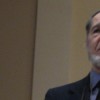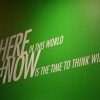The Rise of Car Culture in China

Here’s a great follow-up to a recent post discussing sustainability in China. The New York Times had a great article in their Sunday Magazine on the rise of automobile culture in China. Ted Conover explores the increase in car ownership in China in the most appropriate of fashions: the cross-country roadtrip. By partaking in a self-driving tour from Beijing to Shanghai and back, Conover saw a good deal of what Richard Florida describes as one of the world’s most important ‘urban corridors.’ What he discovered is that the automobile is increasingly become an essential ingredient in Chinese city living.
Conover writes of a growing attitude in China that sounds familiar:
Over and over again, the group described car ownership with a term I would never have thought to use:
“Once China opened up and Chinese people could see the other side of the world and know how people lived there, you could no longer limit the right to buy cars.”
“This right is something that has been ours all along.”
“Driving is our right.”

Conover continues:
The figures behind China’s car boom are stunning. Total miles of highway in the country: at least 23,000, more than double what existed in 2001, and second now only to the United States. Number of passenger cars on the road: about 6 million in 2000 and about 20 million today. Car sales are up 54 percent in the first three months of 2006, compared with the same period a year ago; every day, 1,000 new cars (and 500 used ones) are sold in Beijing. The astronomic growth of China’s car-manufacturing industry will soon hit home for Americans and Europeans as dirt-cheap Chinese automobiles start showing up for sale here over the next two or three years. (Think basic passenger car for $10,000, luxury S.U.V. for $19,000.)
An essential ingredient in car culture is fast food, a major player in the country’s rising obesity problem. McDonalds recently signed a deal to build drive-through McDonald’s outlets in the filling stations of China’s largest gas retailer, state-owned Sinopec:
“With the incredible development of China’s economy and society, car ownership continues to grow at a rapid pace,” says Mike Roberts, president and chief operating officer of McDonald’s in Beijing.
The strategic alliance with Sinopec gives McDonald’s “a look at 30,000 sites across China,” says Roberts.
“We only have three drive-throughs at present,” in a total of 760 China restaurants.
According to a government report, between 1992 and 2002 more than 60 million Chinese citizens became obese, an increased by 97% in 10 years.
The problems of car culture in the United States have been apparent for years: rising obesity rates, sprawling development, increases in greenhouse gas emissions from automobiles, growing spatial segregation of neighborhoods, and dwindling social engagement due to the isolation of driving all the time. Is it presumptuous for an American (one who doesn’t own a car, at least) to ask the Chinese to learn from our experience? Or is there something morally suspicious in denying billions what our culture has had for generations?
Images from the New York Times.
Related posts:
3 Responses to “The Rise of Car Culture in China”
Leave a Reply
[...] from Magical Urbanism Posted in culture, development | [...]
Fascinating article. Thanks.
[...] likely a reflection of China’s recent love-affair with cars, which I’ve written about previously. When I visited a few years ago, the only way to easily navigate some of the major intersections [...]





 Magical Urbanism, a website about urbanization, design and social change, is maintained by Mike Ernst. I'm an urban planner and designer based in New York City. I graduated from the
Magical Urbanism, a website about urbanization, design and social change, is maintained by Mike Ernst. I'm an urban planner and designer based in New York City. I graduated from the 







[...] from Magical Urbanism Posted in culture, development | [...]
Fascinating article. Thanks.
[...] likely a reflection of China’s recent love-affair with cars, which I’ve written about previously. When I visited a few years ago, the only way to easily navigate some of the major intersections [...]